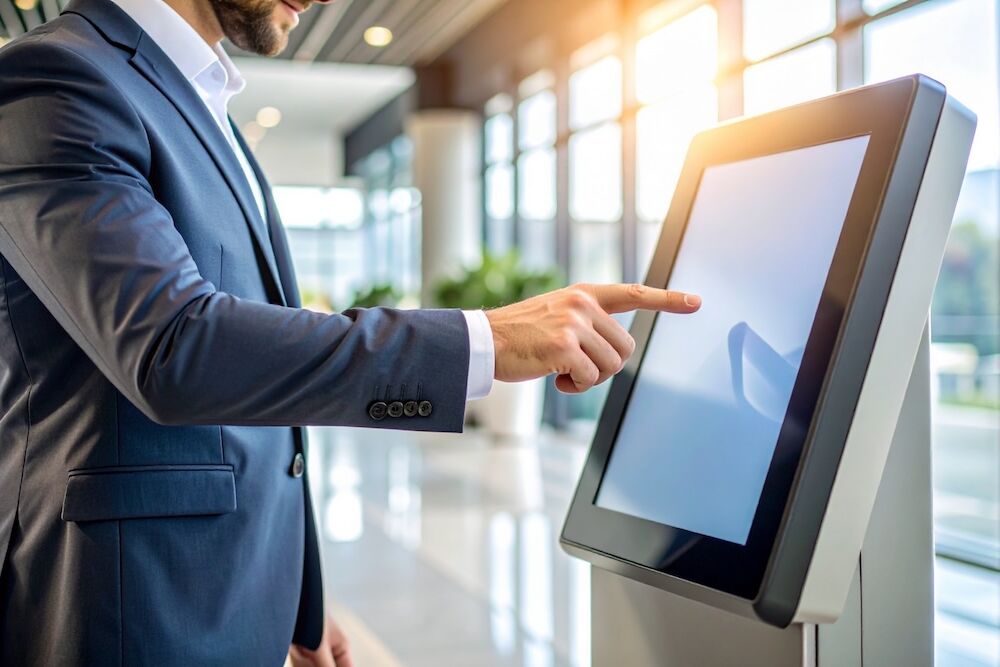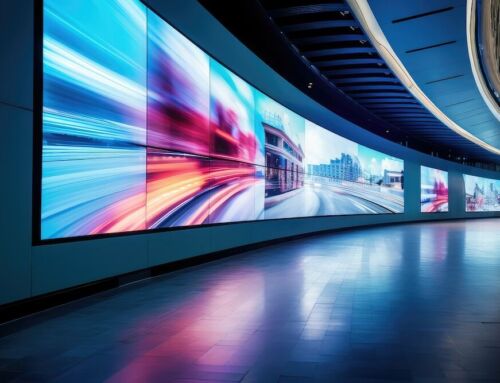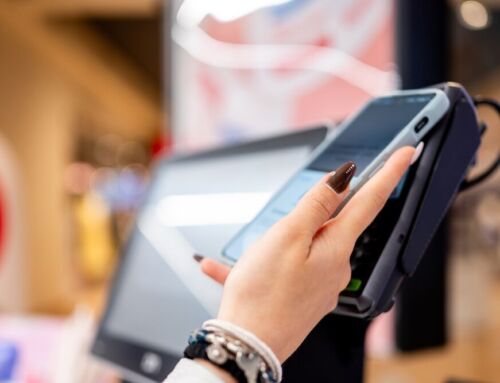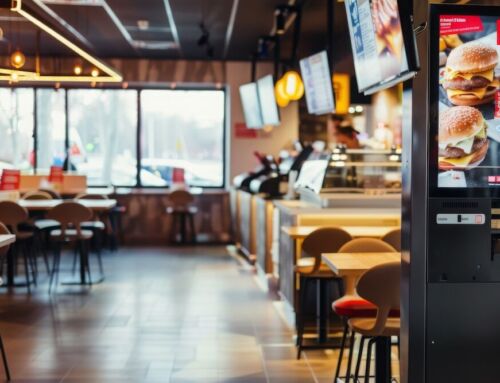Regular readers of this blog will know that one of our favourite things to eulogise kiosks about is their flexibility.
Just looking through the posts we’ve made in recent months, that agility leaps out in the different use cases we’ve covered in 2025 alone. We’ve written about kiosks in hotels and restaurants, in airports and courts of law, how great they are when used as digital information points and how they have adapted to being deployed outdoors.
One area we haven’t touched on for a while is access control. This is a particular favourite of ours because it showcases just how far-reaching even a single application for kiosks can be. Offices, schools, public buildings, hospitals, construction sites, anywhere there needs to be restrictions and controls on who gets into and around premises – kiosks are perfect for streamlining and securing the whole process of identification and authorisation.
Why are they so useful for access control? Again, it’s that word – flexibility. When you consider all the steps involved, access control is actually a pretty complex administrative process. You need rules for who is and isn’t given access. You need a means of authorising newcomers according to those rules. And once authorised, you need a means of identifying the right people quickly and efficiently. Then giving them access, just as quickly and efficiently.
Kiosks work so well because you can combine so many different functions in one unit. From authentication to identification to providing a means of access, there are multiple components you can choose from to tailor your access workflow according to your needs.
Here are five such components and the role they play.
Document scanners
Let’s start at the beginning, the part when, say, a new employee needs to be added to the system and authorised for access. The traditional means of doing this is via official documents such as passports, driving licences, birth and marriage certificates etc. Rather than being photocopied and kept in a filing cabinet somewhere, these days ID documents can be scanned and stored digitally in a database for easy retrieval and use whenever required – such as, checking the name and serial number on an access card match an ID record. With kiosk-sized document scanners, loading ID documents to a database like this becomes a self-service operation.
Biometric scanners
These days, there’s an even quicker, more efficient, more flexible AND more secure way to authenticate a person’s ID than scanning documents – creating a biometric record. Biometrics uses a person’s unique physical features as the token of identification. And biometric capture is a great match for kiosks. Cameras can be used for facial recognition, iris or retina scans, with AI software mapping the physical details and turning it into a digital record. Fingerprint scanners are just as effective and just as readily available. Another benefit with biometrics is, as well as initial ID authentication, it can be used further down the line to authorise access. Once a biometric record is created, all a person needs to do is scan their fingerprint again or look into a camera to get clearance from the access control system.
RFID printers
Biometrics certainly represents the future of access control. But not every business and organisation is ready to move to fingerprint and facial scanning just yet. For reasons ranging from infrastructure to levels of technological comfort, more traditional means of being granted access, such as cards, might be preferred. But never fear, because kiosks can help you there, too. If you already have an access control system based on card scanners, for example, you can add an RFID printer console to your kiosk. As soon as new users have authenticated their ID, they can get a card printed out there and then.
Card readers
Finally, the flipside of having RFID card printers in a kiosk is having card readers, too. That way, you can have the same kiosk run the initial authentication, print the card, and grant access when the card is subsequently scanned – the full journey all in a single unit.
What makes things even better is that, with modular kiosk design, you can mix and match all of these components (and more) to get a kiosk tailored to your specific needs, or even the preferences of different users. That’s what we offer with our Gek0 Kiosk – designed for access control, but adaptable to every use case. Get in touch with us to find out more!




